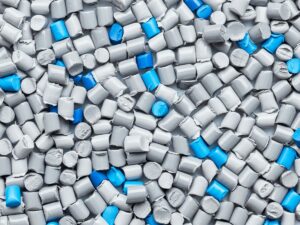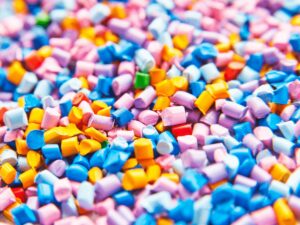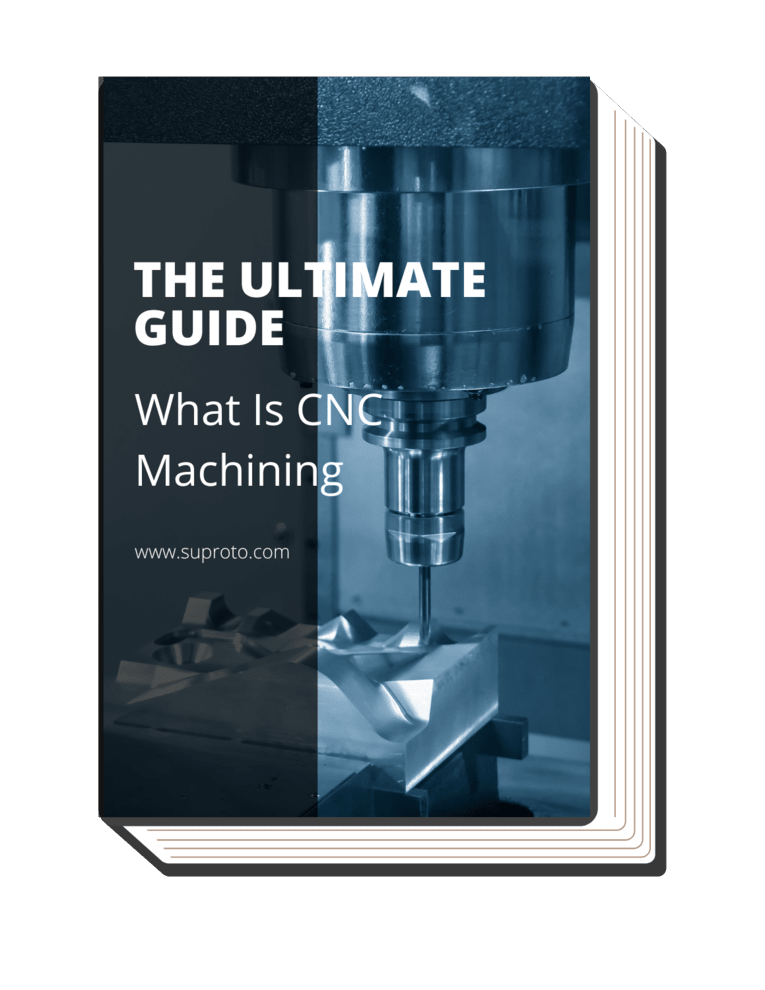1. Understanding Injection Molding
Injection molding is a manufacturing process primarily used to produce parts in large volumes. Now, this is important. It involves injecting molten material into a mold, which then cools and hardens to form the desired shape. In a nutshell, this is a cost-effective and reliable method for mass-producing intricate parts.
Here’s the interesting part. According to a recent study by Grand View Research, the global injection molding market size was estimated at USD 261.8 billion in 2021 and is anticipated to expand at a compounded annual growth rate (CAGR) of 4.8% from 2022 to 2030. Clearly, the growing demand for plastic components across various industries is fueling this market growth.
2. Advantages of Injection Molding
Injection molding brings along a wealth of benefits, cementing its position as the preferred solution for a multitude of manufacturers worldwide. Here are some of the advantages of injection molding:
Cost-Effectiveness
Primarily, injection molding stands out as a cost-effective solution, primarily owing to its automated operational nature which significantly curtails labor expenses. For instance, the inherent capacity of this process to facilitate mass production dramatically shrinks the manufacturing cost on a per-unit basis, thereby driving significant economies of scale.
Design Flexibility
Injection molding offers incredible design flexibility. This process allows for complex and intricate designs that are hard to achieve through other manufacturing processes. As manufacturers, we see the value of this flexibility every day in meeting our client’s unique design requirements. With injection molding, parts can be made in any shape, color, or texture, meeting precise design specifications.
Material Variety
Another key advantage of injection molding is the wide variety of materials it can work with. From various plastics like polyethylene, polystyrene, and ABS to different types of metal alloys, injection molding accommodates a diverse range of materials. This gives manufacturers the freedom to choose the most suitable material for each specific application.
High Efficiency
Once the initial setup is completed and the mold is prepared, here’s the bottom line, injection molding can produce parts at a remarkably fast rate. This makes it a highly efficient process for mass production. The speed at which parts can be produced, coupled with consistency in quality, makes injection molding a preferred method for high-volume production.
Minimal Waste
Injection molding is also a more environmentally friendly manufacturing process as it produces minimal waste. The precise nature of the molding process ensures that there is little to no wasted material. Additionally, any leftover or excess material can often be recycled and used in future production runs, contributing to a more sustainable manufacturing cycle.
3. Materials Used in Injection Molding
When it comes to injection molding, the choice of material is crucial as it can significantly impact the properties and the quality of the final product. The process can accommodate a wide array of materials, but among the most commonly used are thermoplastics and elastomers. Here are some of the materials used for injection molding:
Thermoplastics
Thermoplastics are a class of polymers that become pliable or moldable above a specific temperature and return to a solid state upon cooling. Here’s why that’s important: they are highly versatile and can be remelted and reshaped multiple times without losing their properties. Common examples of thermoplastics used in injection molding include polyethylene, polypropylene, and PVC.
Thermosetting Polymers
Thermosetting polymers, on the other hand, are valuable for their high-temperature resistance. According to Yahoo Finance, thermosetting polymers are typically favored for structural applications in buildings and architecture, such as adhesives and sealants, thermal insulation, roofing, piping, bridge constructions, and civil structure repair and rehabilitation.
Elastomers
Elastomers, also known as rubbers, are a group of materials that can be stretched extensively and still return to their original shape when the stress is released. Here’s the bottom line: This unique property makes them an excellent choice for products that require flexibility, elasticity, and shock absorption. In the realm of injection molding, common elastomers include silicone, natural rubber, and styrene-butadiene rubber.
4. The Injection Molding Process
Injection Molding involves a systematic step-by-step process to produce high-quality parts. By following these step-by-step processes, manufacturers can achieve efficient and accurate production of injection-molded parts. Let’s explore each stage in detail:
Step#1 Mold Preparation
I can almost hear you thinking, what’s the first step in injection molding? The first step in injection molding is mold preparation. This involves cleaning the mold and applying a heat-resistant material, such as a release agent, to ensure easy part removal. Proper mold preparation is essential for achieving precise and defect-free parts.
Step#2 Material Melting
Next in line, the selected material undergoes a meticulous process of melting, reaching a precise temperature. The molten material is subsequently injected into the mold through an injection unit, where it seamlessly fills the mold cavity, taking on its intended shape. This step is paramount as it sets the foundation for producing accurate and intricately shaped parts through injection molding.
Step#3 Cooling and Solidification
After the material is injected, it undergoes a crucial stage known as cooling and solidification within the mold. Utilizing cooling channels integrated into the mold design, the temperature is carefully regulated to facilitate proper solidification of the material. This critical step determines the final shape and properties of the part, ensuring that each component manufactured by Suprotos meets the highest standards of precision and quality.
Step#4 Mold Opening and Ejection
Once the part has solidified within the mold, it’s time to open the mold and carefully eject the finished part. This crucial step is carried out using ejector pins or plates, ensuring that the part is gently pushed out of the mold without incurring any damage. It is vital to exercise caution throughout this process to maintain the integrity and quality of the produced part.
Step#5 Post-Processing
After ejection, the part may require post-processing. So what’s my point? This critical step ensures that the part meets the desired specifications and quality standards. From trimming excess material to drilling holes and adding surface finishes, post-processing adds those final touches that elevate the part’s functionality and aesthetics.
5. Applications of Injection Molding
Injection molding’s versatility and ability to produce high-quality, complex parts make it a valuable technology across these industries, enabling efficient and cost-effective production of a wide range of products. It finds widespread applications in various industries, including:
Automotive Industry
In the automotive industry, injection molding plays a pivotal role in the creation of various parts, such as dashboards, controls, and car bumpers. Injection-molded components excel in modern vehicles due to their strength and lightweight nature. For example, critical components like interior panels, exterior trims, and even intricate engine parts can be efficiently and precisely manufactured using injection molding techniques.
Consumer Goods
Injection molding is extensively utilized in the production of consumer goods such as toys, utensils, and furniture. The process enables high-volume manufacturing of complex shapes and designs, satisfying the demand for aesthetically pleasing and functional consumer products. I’m sure you’re with me on this one when I say that injection molding plays a pivotal role in meeting the diverse needs of consumers in the market.
Medical Field
In the medical field, injection molding, including the advanced capabilities of Suprotos, plays a critical role in the production of surgical equipment, medical devices, and components used in diagnostic instruments. The ability to manufacture intricate and precise parts with excellent dimensional accuracy makes injection molding an ideal choice for meeting the stringent quality and safety requirements of the medical industry.
Electronics and Appliances
Injection molding is widely employed in the electronics and appliance sectors to create components and casings for various devices. Here’s something we can both agree on: the versatility and efficiency of injection molding make it a go-to solution for electronic and appliance manufacturers, allowing them to produce intricate connectors, switches, and durable housing with precision and cost-effectiveness.
Packaging Industry
The packaging industry benefits greatly from injection molding, with applications ranging from bottle caps and containers to closures and packaging components. The process offers the ability to produce lightweight, durable, and visually appealing packaging solutions that cater to the diverse needs of the industry.
6. Design Considerations for Injection Molding
When it comes to injection molding, several design considerations should be taken into account to ensure successful and optimal part production. These considerations include:
Wall Thickness
Wall thickness, as the term suggests, refers to the thickness of the part’s walls. I think you’ll agree with me when I say that designing with appropriate wall thickness is crucial to maintaining part strength and structural integrity, and avoiding issues like sink marks or warping. Ensuring optimal wall thickness enables the proper flow of molten material during the injection process and promotes efficient cooling.
Draft Angle
Draft angle is the taper or angle applied to the vertical surfaces of a part. Incorporating draft angles facilitates the easy ejection of the part from the mold. It minimizes friction and helps prevent damage to both the part and the mold. Adequate draft angles are essential to ensure smooth demolition and prevent issues like sticking or distortion.
Ribs and Fillets
Ribs and fillets are structural design elements used to enhance part strength without significantly increasing wall thickness. Ribs add rigidity and strength to the part, while fillets help distribute stress and prevent stress concentration points. Properly designed ribs and fillets improve part performance and minimize the risk of warping or cracking.
Gate Placement
Gate placement involves determining the location from which molten material enters the mold cavity. So what’s my point? Careful gate placement is crucial to ensure the proper flow of material and minimize the formation of defects like air traps, flow lines, or warping. The choice of gate type and its location affects part quality, appearance, and functionality
Surface Finish
Surface finish refers to the texture and appearance of the part’s surface. It influences both the aesthetic appeal and functional properties of the part. Design considerations for surface finish involve selecting the appropriate texture, gloss level, and specifying any specific requirements for the desired appearance or functional requirements.
7. Future Trends in Injection Molding
The future of injection molding is characterized by exciting trends that drive sustainability and embrace smart manufacturing technologies. Here are several trends in injection molding that manufacturers should be aware of:
Sustainability
Sustainability has become a paramount concern across industries, and injection molding is no exception. Future trends in injection molding emphasize the use of environmentally friendly materials and processes. But there’s a catch, availability, cost, and performance characteristics of these materials still pose challenges for widespread adoption.
3D Printing and Additive Manufacturing
The rise of 3D printing and additive manufacturing has revolutionized the possibilities for complex and customizable designs. For instance, advancements in technology now enable the printing of molds using 3D printers, which can subsequently be utilized in the injection molding process. 3D printing and injection molding integration speeds up manufacturing with rapid prototyping and reduced lead times.
The table below highlights the benefits and applications of 3D printing and additive manufacturing in the context of injection molding. Explore the advantages of complex and customizable designs, rapid prototyping, reduced lead times, cost-effective production, material variety, and sustainability. Discover how the integration of 3D printing with injection molding revolutionizes manufacturing processes and enables innovative design possibilities.
| 3D Printing and Additive Manufacturing Benefits |
Description |
| Complex and Customizable Designs |
3D printing and additive manufacturing allow for the creation of complex and customizable designs that were previously challenging or impossible with traditional manufacturing methods. This technology enables the production of intricate shapes, intricate internal structures, and personalized designs, offering unparalleled design freedom and versatility. |
| Rapid Prototyping and Iterative Design |
With 3D printing, rapid prototyping becomes feasible, accelerating the design and development process. Design iterations can be quickly produced and evaluated, reducing time and costs associated with traditional prototyping methods. This iterative design approach allows for faster product refinement and better overall design outcomes. |
| Reduced Lead Times and Faster Time-to-Market |
The integration of 3D printing and additive manufacturing with injection molding speeds up manufacturing processes. By 3D printing molds, the injection molding process can commence rapidly, reducing lead times and enabling faster time-to-market for products. This agile manufacturing approach can provide a competitive edge by allowing businesses to respond quickly to market demands and opportunities. |
| Cost-Effective Small-Scale Production |
3D printing and additive manufacturing offer cost advantages for small-scale production runs. Traditional manufacturing methods often involve high tooling costs and minimum order quantities, making small-batch production economically unviable. With 3D printing, parts can be produced on-demand, eliminating tooling expenses and enabling cost-effective small-scale production or customization for niche markets or specific customer requirements. |
| Material Variety and Performance Optimization |
Additive manufacturing provides a wide range of material options suitable for different applications and industries. From plastics and metals to composites and ceramics, 3D printing offers material versatility to optimize product performance. Customizable material properties, such as strength, flexibility, or heat resistance, can be achieved by selecting appropriate printing materials, enhancing the functionality and quality of manufactured parts. |
| Sustainability and Waste Reduction |
3D printing and additive manufacturing reduce material waste by utilizing only the necessary amount of material for each print job. This sustainable approach minimizes material waste and contributes to environmental conservation. Additionally, additive manufacturing enables the design and production of lighter-weight components, which can lead to reduced energy consumption and carbon footprint during product use and transportation. |
Smart Manufacturing
The integration of smart manufacturing technologies, such as Industry 4.0 and the Internet of Things (IoT), is another significant trend in injection molding services. Smart manufacturing revolutionizes the entire production process by leveraging automation, real-time monitoring, data analytics, and connectivity. The problem is, the implementation of these advanced technologies can be complex and requires careful planning and investment.
Dive Deeper Into Our Resources
Looking for more diverse product options? Browse through our handpicked selections:
Still haven’t found what you’re looking for? Don’t hesitate to contact us. We’re available to assist and guide you.
Conclusion
In conclusion, injection molding is a vital process in modern manufacturing, delivering precise and efficient production of a wide range of products. Understanding its process, advantages, materials, design considerations, and future trends highlights its significance in various industries. If you’re seeking to integrate this transformative technology into your business, now is the time to act.
The potential benefits and applications of injection molding are vast, offering opportunities to enhance product quality, boost production efficiency, and drive business growth. Embrace the possibilities of injection molding today and unlock new levels of innovation and success. Contact our expert team at Suprotos to explore how injection molding can revolutionize your manufacturing operations.



